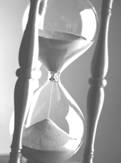
題目列表(包括答案和解析)
| A.3 | B.4 | C.5 | D.7 |
| A.they know very little about the sun |
| B.the sun there never goes down in winter |
| C.it’s too cold for them to go out to watch the sun |
| D.it has long dark winters and long light summers |
| A.洋流 | B.潮汐 | C.海嘯 | D.波浪 |
| A.News | B.Science | C.Advertisement | D.Sports |
| A.Different Ways to Tell Time | B.How the Clock Was Invented |
| C.The Development of the Clock | D.A Useful Machine to Tell Time |
| |||||||||||||||||||||||||||||||||||||||||||||||||||||||||||||||||||||||||
How could we tell time if there were no watches or clocks anywhere in the world?
The sun was probably the world’s first “clock”, except in the far north, where the Eskimos (愛斯基摩人) live.There, it’s dark most of the winter, and light most of the summer.But in most of the world, people have used the sun fooday, if you don’t have a clock that shows time, you still know that when the sun shines, it’s day, and when it’s dark, it’s night.The sun can not only tell you whether it’s day or night but also it’s morning, noon, or afternoon.When the sun is almost directly overhead, it’s noon.

People who live near the sea from the tides.In the daytime, for about six hours, the water rises higher and higher on the beach.And then it about six hours.The same thing happens again at night.There are two high tides
and two low tides every 24 hours.
Seamen on a ship tell time by looking at the moon and the stars.The whole sky is their clock.
In some places in the world the wind comes up at about the same
time every day or changes direction or stops blowing.In these places
the wind can be the clock.
A sand clock is an even better clock.If you had fine dry sand in a
glass shaped like the one in the sand will take another hour to go back again.
1.From the passage we can know there are _____ ways to tell time besides the clock and watch.
A.3 B.4 C.5 D.7
2.The Eskimos in the far north can’t use the sun for a clock because ______.
A.they know very little about the sun
B.the sun there never goes down in winter
C.it’s too cold for them to go out to watch the sun
D.it has long day and long light summers
3.The underlined word “tide” in the passage means _______.
A.洋流 B.潮汐 C.海嘯 D.波浪
4.In which page of the newspapers probably read this passage?
A.News. B.Science. C.Advertisement D.Sports.
5.What’s the best title for the passage?
A.Different Ways to Tell Time B.How the Clock Was Invented
C.The Development of the Clock D.A Useful Machine to Tell Time
湖北省互聯網違法和不良信息舉報平臺 | 網上有害信息舉報專區 | 電信詐騙舉報專區 | 涉歷史虛無主義有害信息舉報專區 | 涉企侵權舉報專區
違法和不良信息舉報電話:027-86699610 舉報郵箱:58377363@163.com